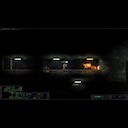Установить Steam
войти
|
язык
简体中文 (упрощенный китайский)
繁體中文 (традиционный китайский)
日本語 (японский)
한국어 (корейский)
ไทย (тайский)
Български (болгарский)
Čeština (чешский)
Dansk (датский)
Deutsch (немецкий)
English (английский)
Español - España (испанский)
Español - Latinoamérica (латиноам. испанский)
Ελληνικά (греческий)
Français (французский)
Italiano (итальянский)
Bahasa Indonesia (индонезийский)
Magyar (венгерский)
Nederlands (нидерландский)
Norsk (норвежский)
Polski (польский)
Português (португальский)
Português-Brasil (бразильский португальский)
Română (румынский)
Suomi (финский)
Svenska (шведский)
Türkçe (турецкий)
Tiếng Việt (вьетнамский)
Українська (украинский)
Сообщить о проблеме с переводом































Size ratio is a thing to differentiate species, u can guess most ants species' genus with small size with only Monomorium, larger size will be in other genuses. I brough this up because I think the spooders and big spooders aren't the same species if we consider the above theory is true, even the above is not true, the size ratio of the big spooder release compare to nope flies is way too big to ignore
Though, I suggest another theory on how the big spooder hunts, they will cruise around the cave, once detect a potential prey, they unleash their symbiotic partner, the Formido Minimum (Small fear or add Volans for small flying fear if u like them to), to slow their prey and let the big spooder have time to approach the prey and consume the unlucky creature, then the flies would preferably die after some periods of time and leave the prey for the big spooder to consume and create energy required to raise the new batch of flies inside its body